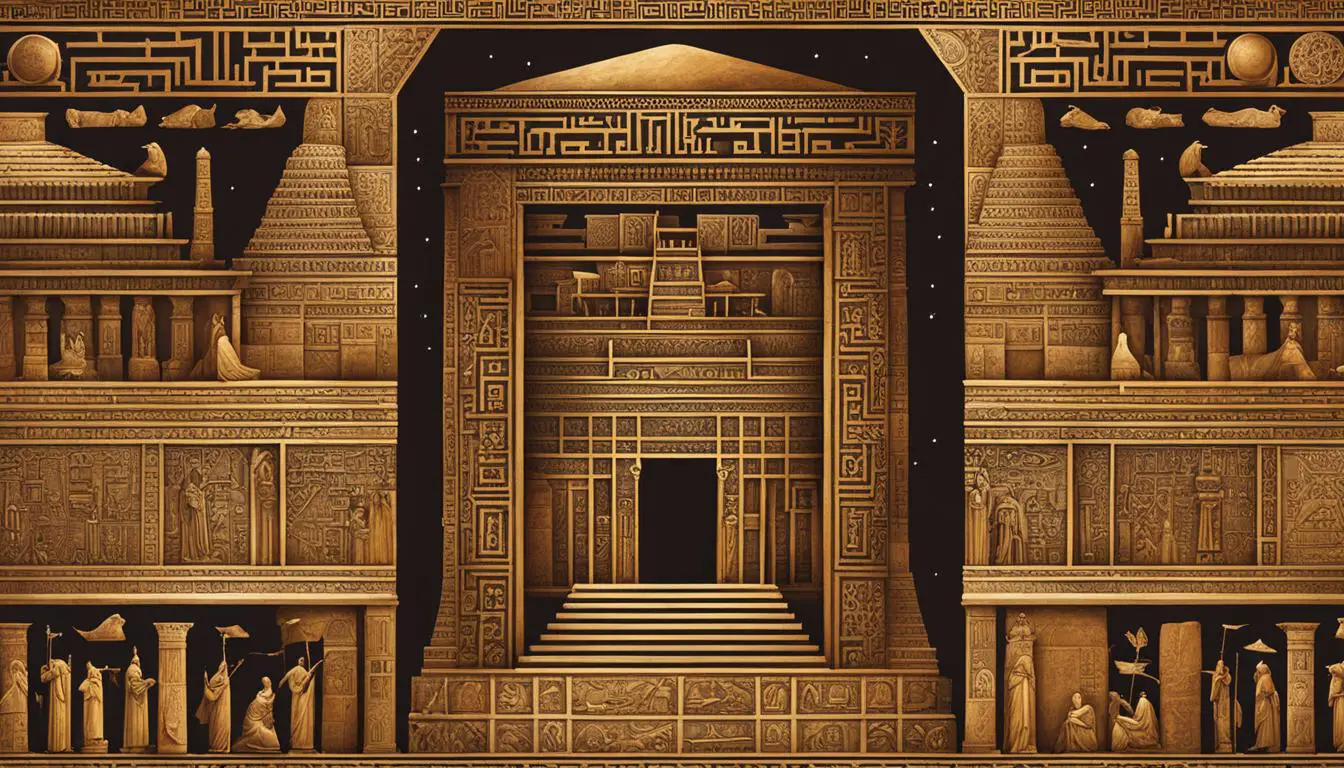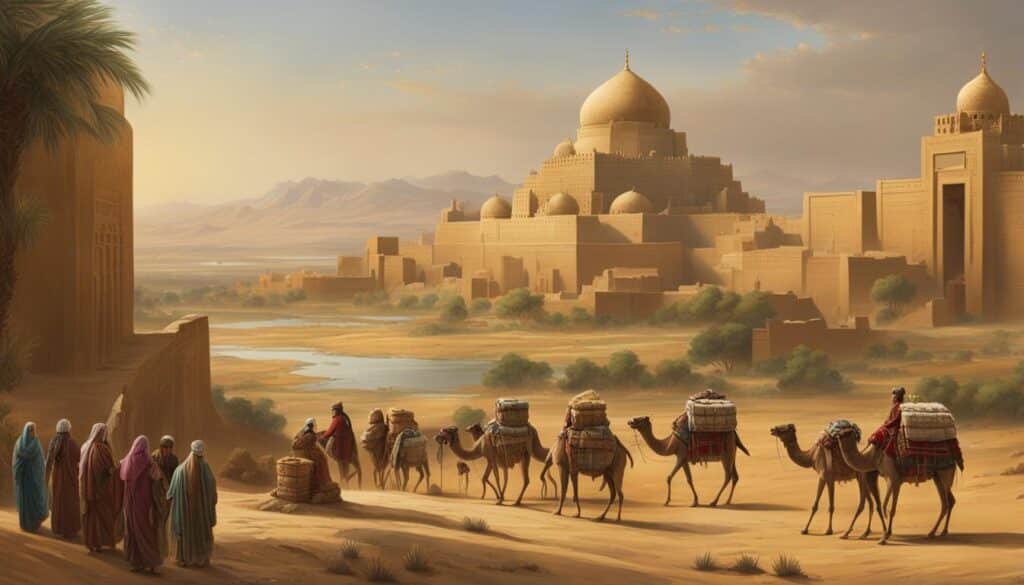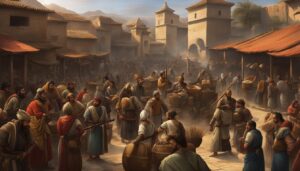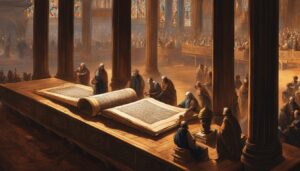
The Bible, as a religious text, was developed within the cultural context of the Ancient Middle East. The cultures of the Mesopotamians, Canaanites, Egyptians, Hittites, and others had significant influences on the Hebrew Bible. The revelation of God in the Bible incorporates concepts and terms that were familiar to the people of the region. This integration of cultural elements into the biblical narratives raises questions about the uniqueness of Israelite religion compared to the surrounding pagan world. While there are points of contact and shared cultural expressions, the Bible also maintains its distinctiveness. The relationship between the Bible and its cultural milieu provides insights into the historical experiences and religious practices of the ancient Middle Eastern civilizations and their impact on biblical narratives.
Key Takeaways:
- Ancient Middle Eastern cultures had significant influences on the development of the Hebrew Bible.
- The integration of cultural elements into the biblical narratives raises questions about the uniqueness of Israelite religion.
- The Bible maintains its distinctiveness despite the shared cultural expressions.
- Studying the relationship between the Bible and its cultural milieu provides insights into the ancient Middle Eastern civilizations.
- Ancient Middle Eastern influences on the Bible shed light on the historical experiences and religious practices of the time.
Ancient Middle Eastern Influences on the Patriarchs
The patriarchs, particularly Abraham, were significantly influenced by the cultures of the ancient Middle East. Abraham’s journey from Ur to Haran, a city with strong historical connections to him, demonstrates his close association with the region. The culture of Nuzu, located in Mesopotamia, provides us with valuable insights into the social customs and terminology reflected in the Pentateuch and other Old Testament texts.
One fascinating aspect of the ancient Middle Eastern influence on the patriarchs is the adoption practices prevalent at the time. The biblical accounts of Abraham and Jacob show clear parallels to adoption practices in the region. We see examples of filial adoption, where individuals are adopted as sons, as well as the adoption of individuals into families that lack male heirs. These practices were common in the ancient Middle East and provide valuable context for understanding the stories of the patriarchs.
In addition to adoption practices, the biblical narratives also reflect the significance of birthright and blessings/oaths, which can be traced back to ancient Middle Eastern cultures. The cultural importance placed on inheritance and family blessings is evident in the stories of Abraham and his descendants. Drawing these parallels helps us gain a deeper understanding of the cultural framework within which the biblical narrative unfolds.
| Key Elements of Ancient Middle Eastern Influences on the Patriarchs | Ancient Middle Eastern Context | Biblical Narratives |
|---|---|---|
| Filial Adoption | Common practice in the ancient Middle East | Abraham adopting Eliezer as his heir (Genesis 15:2-3) |
| Adoption of Individuals into Families without Male Heirs | Widely observed in ancient Middle Eastern cultures | Jacob adopting Joseph’s sons as his own (Genesis 48:5) |
| Significance of Birthright and Blessings/Oaths | Evidence of cultural practices in the ancient Middle East | Esau selling his birthright to Jacob (Genesis 25:29-34) |
Understanding the cultural context and practices of the ancient Middle East enriches our interpretation of the stories of the patriarchs. The adoption practices, birthright significance, and blessings/oaths observed in the biblical narratives find compelling parallels in the cultural milieu of the time. By exploring these influences, we gain valuable insights into the historical and social setting in which the patriarchal figures operated.
Ancient Middle Eastern Influence on the Patriarchs: Key Takeaways
- The patriarchs, including Abraham, were closely associated with the ancient Middle East.
- Nuzu, a city in Mesopotamia, offers valuable insights into the social customs and terminology reflected in the biblical narratives.
- Adoption practices, such as filial adoption and the adoption of individuals into families without male heirs, were common in the ancient Middle East and are reflected in the biblical accounts of the patriarchs.
- The significance of birthright and blessings/oaths in the biblical narratives also finds parallels in the cultural practices of the time.

Ancient Middle Eastern Influences on Mosaic Era
In examining the Mosaic era, we find fascinating influences from the ancient Near Eastern cultures that surrounded Israel. One significant influence can be seen in the life of Moses, particularly his Egyptian upbringing and education at Pharaoh’s court. This exposure to Egyptian culture undoubtedly shaped Moses’ understanding and perspective as he later became the leader of the Israelite people.
Another remarkable aspect of Israelite religion is the uniqueness of their monotheism amidst a polytheistic environment. While the ancient Near East was filled with numerous gods and goddesses, the Israelites proclaimed the exclusive worship of their God, YHWH. This emphasis on monotheism was distinct and set them apart from their neighboring cultures.
Furthermore, the Mosaic law codes bear resemblances to other Semitic law codes such as the famous Code of Hammurabi. However, the Israelite law codes introduced a moral-ethical dimension that was distinctive. These laws not only addressed societal matters but also emphasized moral obligations and ethical conduct, reflecting the values and beliefs of the Israelite tradition.
Studying the interplay between the biblical narratives and the ancient Near Eastern cultures provides valuable insights into the historical and religious context of the Mosaic era. By understanding the Mesopotamian influence on Moses, the unique nature of Israelite monotheism, and the development of their law codes, we gain a deeper appreciation for the rich cultural tapestry that contributed to the shaping of ancient Israelite civilization.
FAQ
How did the ancient Middle Eastern cultures influence the Bible?
The Bible was developed within the cultural context of the Ancient Middle East, incorporating concepts and terms familiar to the people of the region. This integration of cultural elements into the biblical narratives raises questions about the uniqueness of Israelite religion compared to the surrounding pagan world. However, the Bible also maintains its distinctiveness.
Which ancient Middle Eastern cultures are associated with the patriarchs in the Bible?
The patriarchs, particularly Abraham, are closely associated with the ancient Middle Eastern cultures. Abraham was called from Ur and had connections to Haran, which were significant in ancient Abrahamic history. The culture of Nuzu, in Mesopotamia, provides insights into the social customs and terminology reflected in the Pentateuch and other Old Testament texts.
What influences from the surrounding ancient Near Eastern cultures can be seen in the Mosaic era?
The Mosaic era also shows influences from the ancient Near Eastern cultures. The Egyptian influence on Moses is evident in his education and upbringing at Pharaoh’s court. The Mosaic law codes share similarities with other Semitic law codes, such as the Code of Hammurabi, but also introduce a unique moral-ethical element that is distinct to Israelite tradition.








